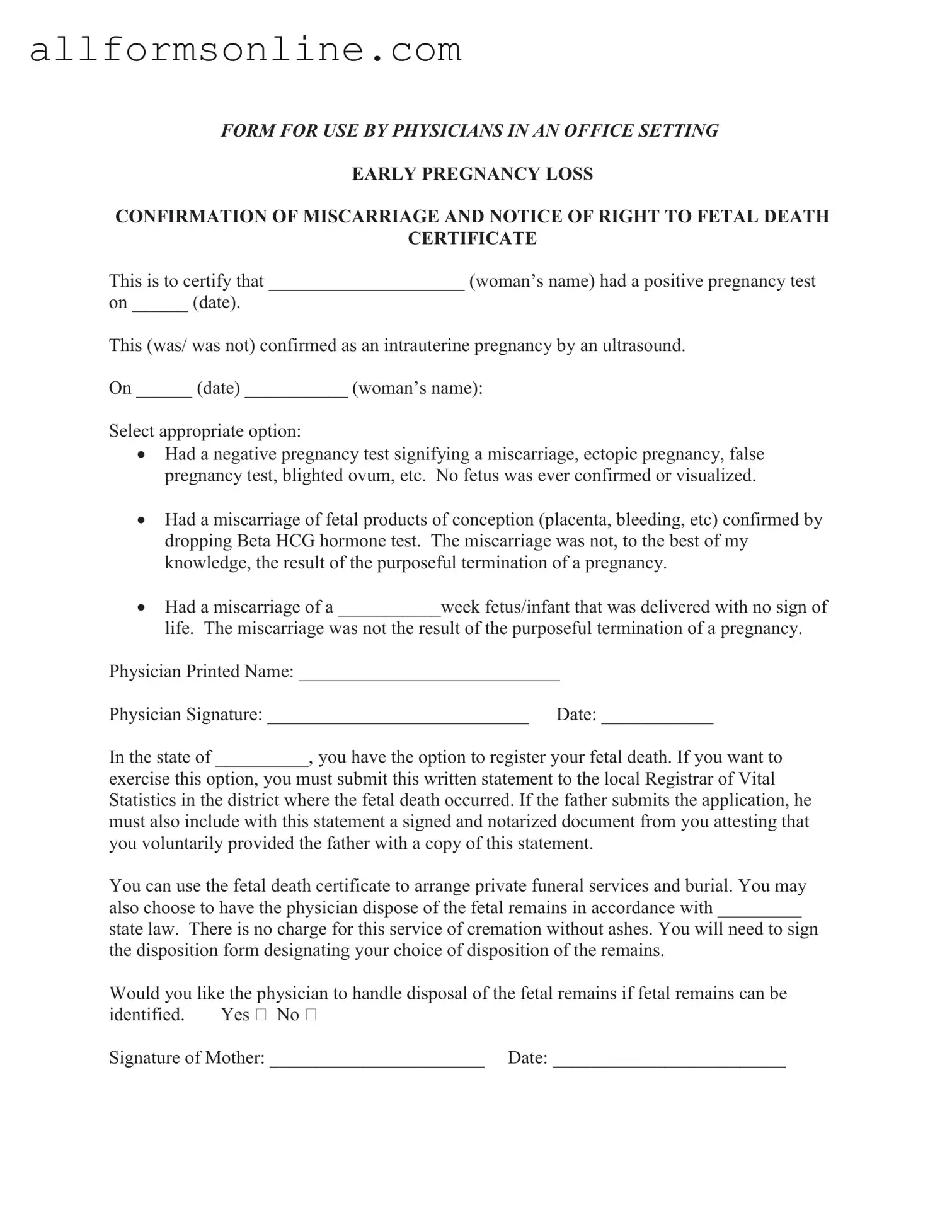What is the Miscarriage Discharge Paper form?
The Miscarriage Discharge Paper form is a document used by physicians to confirm a miscarriage. It provides essential details about the pregnancy, including the woman's name, the date of the positive pregnancy test, and whether an ultrasound confirmed an intrauterine pregnancy. This form serves as an official record of the miscarriage and outlines the options available to the woman regarding fetal remains.
Why is this form important?
This form is important because it provides a formal acknowledgment of the miscarriage. It helps in the documentation of the event for medical records and can be necessary for legal purposes, such as applying for a fetal death certificate. Additionally, it offers guidance on the options available for the disposition of fetal remains.
What information is included in the form?
The form includes the woman's name, the date of the positive pregnancy test, confirmation of the pregnancy status through ultrasound, and the details regarding the miscarriage. It also contains the physician's printed name, signature, and the date of the document. Furthermore, it outlines the woman's rights concerning the registration of fetal death and the options for handling fetal remains.
Can I register my fetal death in my state?
Yes, in many states, you have the option to register a fetal death. This process typically involves submitting the Miscarriage Discharge Paper form to the local Registrar of Vital Statistics in the district where the fetal death occurred. It's important to check the specific requirements in your state, as they may vary.
What happens to the fetal remains?
The form provides options for the disposition of fetal remains. You can choose to have the physician handle the disposal according to state law, which may include cremation without ashes at no charge. Alternatively, you may arrange for private funeral services and burial if you prefer. You will need to sign a disposition form to indicate your choice.
Do I need to sign the form?
Yes, your signature is required on the Miscarriage Discharge Paper form. This signature indicates your acknowledgment of the information provided and your choices regarding the disposition of fetal remains. It is essential for the form to be complete and valid.
What if I want the father to submit the application for fetal death registration?
If the father wishes to submit the application for fetal death registration, he must include a signed and notarized document from you. This document should attest that you voluntarily provided him with a copy of the Miscarriage Discharge Paper form. This ensures that both parties are informed and in agreement regarding the registration process.
Is there a fee for the services mentioned in the form?
There is no charge for the service of cremation without ashes as indicated in the form. However, if you choose to arrange private funeral services or burial, there may be associated costs. It is advisable to discuss these options with the funeral provider to understand any potential fees involved.
